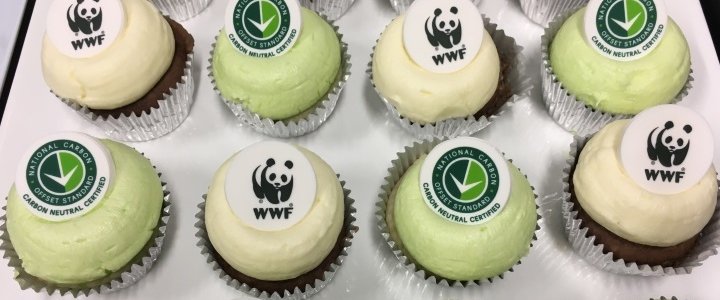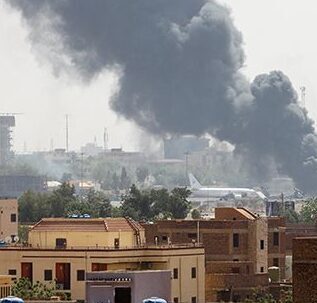Through Commitment 3.3, ACFID’s Code of Conduct acknowledges that the environmental sustainability and stewardship is an integral part of long term development and needs to be a key part of the way we work. It expands the focus from understanding and reducing negative environmental impacts to also promoting environmental sustainability and improved environmental outcomes.
As part of our spotlight on Quality Principle 3, WWF-Australia shares their story about their Sustainability Committee which was put in place to deliver WWF-Australia’s Environmental Sustainability Strategy for their internal operations. With competency, attitude and commitment, the cross functional team was so successful in building environmental sustainability culture across all aspects of the organisation, that it is no longer needed; but of course, the job still gets done!
Read this captivating Q&A with Dermot O’Gorman.
What was the WWF Sustainability Committee?
As one of the most respected environmental NGOs in the world, WWF staff demanded a commitment to improving the organisation’s operational environmental footprint. In response, in December 2011, management committed budget, convened a sustainability committee, allocated staff time, appointed an executive sponsor and gave the committee the mandate to develop the organisation’s first five-year Sustainability Strategy.
The scope of the Sustainability Committee was exclusively internal. Their role was to investigate, measure and report on the current state, and to implement initiatives to reduce the organisational operational environmental footprint. The committee initiated activities to identify and reduce WWF’s carbon footprint, however it also set out to change the workplace culture so that sustainability underpinned all organisational decisions.
Why was the Sustainability Committee so effective?
We drew on the staff members who had advocated for an internal Sustainability Strategy and the committee was cross-functional – comprised of staff from a range of job levels, disciplines and geographies. The main criteria for participation on the Sustainability Committee was passion and a commitment to the goal. It was important that the committee had the support of an Executive sponsor and therefore had direct access to the CEO, and through the CEO to the governing Board.
In every sense, the work of the sustainability committee was reaching the whole organisation, with both a top-down, and bottom-up approach. As first principles the committee agreed to be totally transparent in all communications and reporting, and that committee members would be educators, and supporters of staff, never sustainability “police”. The committee focused on finding solutions and rewarding and celebrating positive actions rather than punishing negative actions.
From the outset it was important that participation on the committee was voluntary. This meant that all committee members were passionate and highly engaged. The structure was not hierarchical, and although there was a chair to help lead discussion and organise meetings, there was little hierarchy, and all ideas were considered.
The committee was committed to shifting the culture of WWF-Australia and it also invested time into its own team dynamics. Team building activities were conducted at regular intervals throughout the year, individual strengths informed the allocation of tasks, and the committee engaged in open feedback, celebrating successes small and large, and openly sharing and learning from failures.
Why did they achieve their goals well in advance of expectations?
Focus, communication and staff engagement were keys to success. While there was the potential for the committee to become distracted by nice-to-have activities, it chose to stay focused on evidence-based improvements, and to implement actions to reduce the areas with the highest footprint. The committee didn’t sugar coat anything. It was open about the organisation’s struggles as well as its successes on the journey to reduce its carbon footprint. Good, regular communication can’t be overstated. The committee regularly provided its plans and reports to the Executive and governing Board and responded to feedback.
It created an internal brand, with a logo, brand colours, and typeface. It provided electronic newsletter style updates to all staff and promoted special initiatives. It also created a small number of regular events such as “No Fly January”, and “AERI” (Air Emissions Reduction Initiative) and made them fun with tag lines such as “Flying is for the birds”.
Staff engagement was also critical. The committee launched the air emissions reduction initiative as a competition with prizes for the team with the lowest air travel emissions in a set period. It worked with department heads and their teams to help them to identify a realistic but significant air travel reduction target – the targets were set by teams not the sustainability committee. This ensured ownership across the organisation. At the governance level the committee provided an Annual Sustainability Report as a stand-alone section of WWF’s Annual Report and presented at the Annual General Meeting.
What did they achieve?
Ultimately WWF mainstreamed sustainability into standard business as usual practices. The work of the committee naturally synergised with specific roles within the organisation and was subsequently formally incorporated into those roles. One of the most prominent outcomes of this journey has been achieving carbon-neutral certification against the National Carbon Offset Standard (NCOS) under the Australian Government’s Carbon Neutral Program. WWF has now been carbon-neutral since January 2016; reporting and reducing our carbon footprint through a range of initiatives.
We then offset all remaining emissions through the purchase of Gold Standard or equivalent offsets, which ensures a high standard of environmental and social benefits are delivered by the projects in which we invest.
How has WWF embraced the initiatives that were put in place?
- No-fly January, which was one of the first initiatives of the committee, has been implemented every year since its inception.
- We started certifying our national offices with NABERS ratings, and our 2013 relocation of the Sydney office resulted in a 6 star Green Star fitout, with biophilic design principles.
- Several campaigns on reducing paper usage resulted in the adoption of solutions (such as papercut, and paperless meetings) this resulted in WWF reducing its overall paper use, as well as switching to 100% FSC certified paper. This, in part lead to the development of our sustainable procurement policy which remains in place.
- Once we started looking at waste stream management, we went from the standard three waste streams, up to nine (including batteries, soft plastics, e-waste, toner cartridges, mobile phones), as well as some in-house solutions for organic waste.
Ultimately, the committee’s work became dedicated to the tracking, measuring, collating, and evaluating of data from impact areas, including waste, electricity, water, built environment, transport, and others.
What were the challenges that WWF faced with implementing these?
It may be a cliché, but “if at first you don’t succeed, try, and try again”. For example, No-fly January had some initial teething problems. The sustainability committee took a softly-softly approach. Informing and guiding, but never directing or demanding. Management insisted we maintain the initiative and it was ultimately successful to the point of becoming business as usual. The committee incentivised participation in other initiatives with friendly competitions and prizes (that were themselves recycled).
A word for ACFID’s smaller members…. it’s worth noting that while larger organisations may have more resources to dedicate, they also have more ground to cover. There are economies of scale to consider. Organisations of all sizes will have their own challenges to overcome.
How has WWF ensured that environmental sustainability continues, now that the Committee has disbanded?
- Over time, this responsibility shifted from a sustainability committee, to standard business as usual that is fully embedded into functional position descriptions. One of the Code’s Good Practice Indicators is the appointment of a focal person with responsibility for environmental sustainability – and in our situation, this is led by the Low Carbon Futures team, with formal contributions from many departments across the organisation.
- Internal sustainability KPI’s are part of several staff members’ annual KPIs.
- In the first phase of the internal sustainability journey several staff completed a Certificate IV in Environmental Management and Sustainability. WWF-Australia also joined a Green Office initiative lead by WWF-Finland that provided a practical framework for improving the environmental practices of offices.
- Another of the Code’s Good Practice Indicators is circulate periodic internal reports to relevant stakeholders on environmental sustainability and impact achievements, and in this regard, we produce an annual sustainability report, which is part of the public annual report, tracking WWF’s sustainability journey.
Are there any unexpected outcomes came from these new practices?
The most positive, and unexpected outcome was that workplace sustainability practices would become so deeply ingrained in WWF’s workplace culture, that the need for a dedicated committee would disappear.
One thing that happened frequently, was we had to acknowledge that the landscape of sustainable workplace practices evolves constantly. We were always learning new things. For example, our staff had been diligently separating take away coffee cups into different recycling bins, until we discovered that they weren’t recyclable (at the time). After a few campaigns the vast majority of staff now use reusable “keep cups”, but it was an important lesson in acknowledging that it’s an ever-changing landscape.
There was some initial reluctance from a very small number of staff members to embrace sustainable workplace practices. They feared that it would limit their ability to do their jobs well. We measured employee engagement through workplace culture surveys, and over time the initial small number of resistors diminished to an even smaller number as sustainability was embraced by the organisation and became the norm.
WWF-Australia is very proud of its achievements in this space and is happy to see momentum building towards so many others starting their own sustainability journeys.
There has been an educational aspect in this work, which is valuable to all of our staff and volunteers and enables them to build their own skills and knowledge in environmental sustainability, that they can bring to their own lives outside of working at WWF. In this way, the overall environmental impact is most probably greater than we can monitor. We all share in the learnings, but the successes and challenges of implementing sustainable workplace practices has resulted in a team that is proud to be able to walk the talk in delivering on, even in a small way, the SDGs.

Dermot O'Gormon
Dermot O’Gorman is the CEO of WWF-Australia and is on the Board of ACFID. He has been a leader in sustainable development for over two decades across Australia, the Pacific, Asia, and Europe, including 15+ years as CEO in the WWF offices of Australia, China and the Pacific. As the CEO of WWF-Australia, Dermot leads a team of 100 staff who undertake a unique combination of on-the-ground field projects, strategic partnerships with business, and powerful advocacy campaigns. He has been responsible for delivering major conservation and sustainable development initiatives from those with significant global impact to tangible on ground results.









